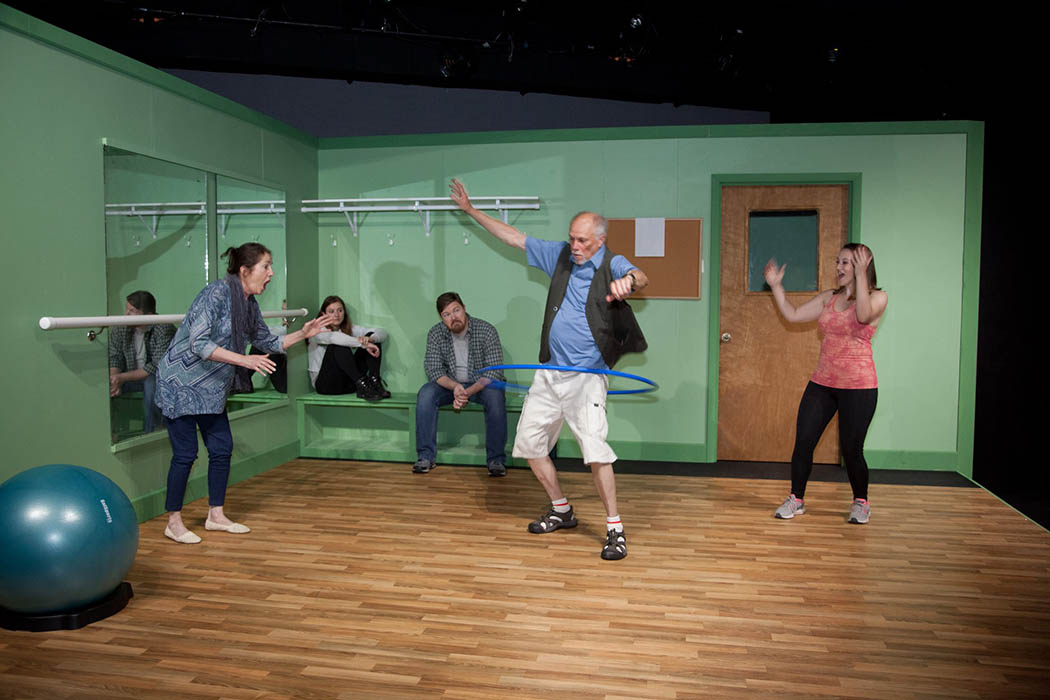What could be simpler—five men and women take a six-week acting class at a community center somewhere in Vermont, engaging in exercises designed to help them explore the projection of their feelings. For the audience of Annie Baker’s captivating 2009 play, Circle Mirror Transformation, which opened last Friday at Flying Anvil Theatre, the truths revealed are anything but simple, but are the threads of everyone’s human existence. Within the five participants, reluctant individuals take chances, humorous and unfortunate personality quirks bubble to the surface, and the inevitable class romances are attempted—all woven by Baker into a narrative that charms with both subtlety and surprises.
Director Jayne Morgan has guided the pacing of that narrative masterfully, giving the characters a delicious construction of starts, stops, and pauses that are both natural and dramatically revealing. In that construction is a gradual reveal of the characters themselves, a lot of which comes through in an exercise in which the characters develop bios of their classmates. The leader of the class is Marty (Margy Ragsdale), the essence of a middle-age alternative education believer who came of age in the 70s. Also taking the class is her husband James (Greg Congleton), a man with hippie-esque sensibilities who has somehow managed to remember everything he needs to, including regrets. Theresa (Abby Reber) is a mid-30s woman who attempted the acting world of Manhattan, but lack of success has caused her retreat to Vermont. Schultz (Josh Brandon), a recently divorced wood craftsman, has quite a bit of emotional baggage woodworking cannot cure. Finally, Lauren (Callie Bacon) is a 16-year old high school student, trying to pick up pointers to win the role of Maria in West Side Story, but is actually fighting indecision and trouble at home.
Broken into six segments, each representing a week of the class, the intriguing narrative style of Circle Mirror Transformation reveals an evolution within the lives of the characters, an evolution that every audience member can probably see in their own lives. Romances bloom, then fizzle; a teenager struggles with goals for the future amid family issues; an older man struggles to find appreciation; and people are described by how they deal with failure.
The beauty of these characters—and ultimately the play—is not with any sort of dramatic uniqueness, but rather with the attention to the ordinary moments of life and living that flows from Baker through Morgan into this terrific cast. Ordinary and conversational pauses, gestures, and uncomfortable silences are the tools wielded by the actors, often so subtly and carefully that their character’s personalities seep into the audience imperceptibly. Nor does Baker offer any judgements or conclusions, but instead allows the audience to soak it all in—happiness or depression, acceptance or denial—and make up their own minds.






